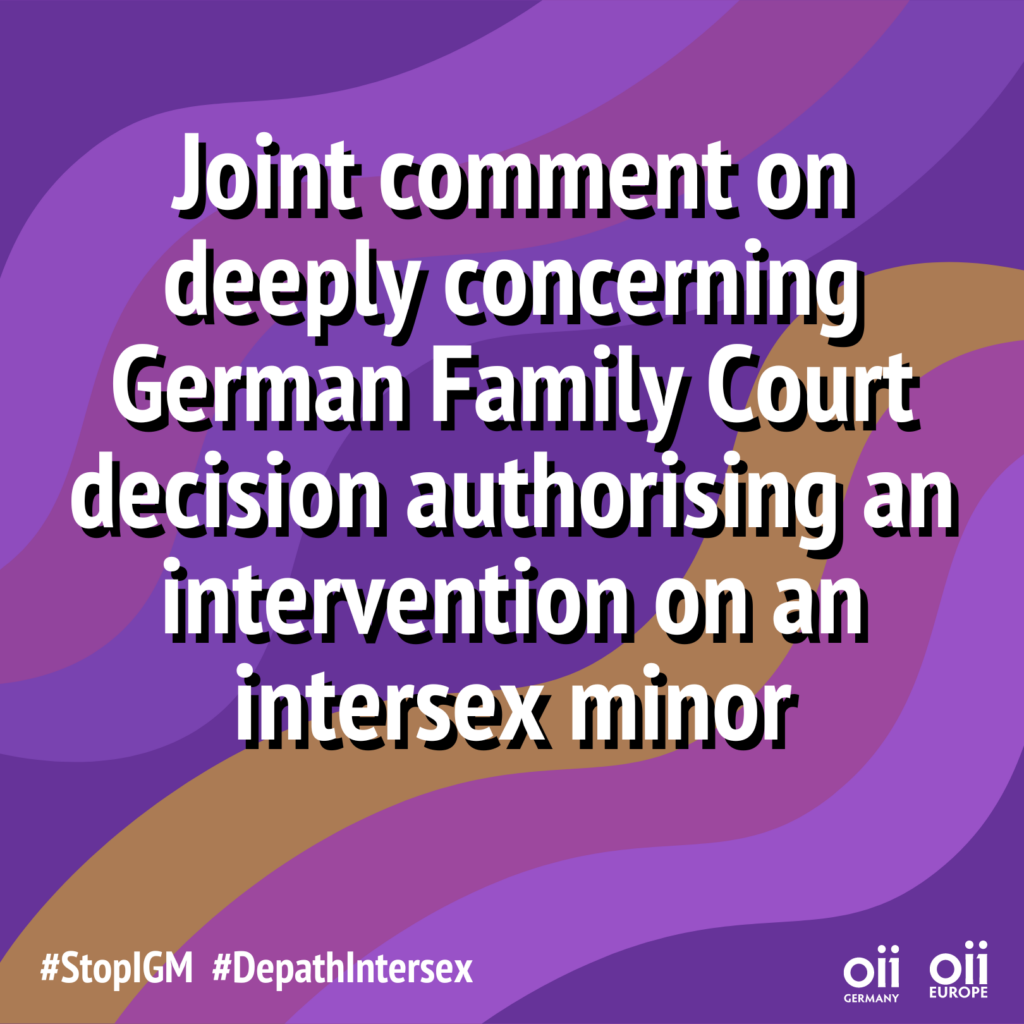Introduction

In a recent decision from March 6th 2024, a German Family Court from Baden-Württemberg decided on a case brought forward by the parents of an intersex minor diagnosed with a form of CAH[1], who had requested authorisation to consent to an intervention to modify the minor’s sex characteristics. While Germany has a law that bans intersex genital mutilation, the law leaves entry points for misusing it and we consider this case a prime example of the materialisation of this risk.
The Court approved the request, based on the report issued by an interdisciplinary commission, which argued, among other points, that the intervention would be in the “best interest of the child”, due to the child being born with a urogenital sinus[2].
The following analysis relies on the material available publicly, namely the decision of the Family Court[3] and the text of the law “for the protection of children with variants of sex development”(19/27929)[4], including its explanatory memorandum. We acknowledge that we did not have access to the interdisciplinary commission’s statement, which may have helped to complete this analysis.
Any statement of a medical nature arising from the present case contained in the following analysis relies on input from an experienced medical professional adopting a human-rights based approach to the care of intersex persons.
The first part of the analysis focuses on presenting the provisions in the German intersex genital mutilation ban, and how they pertain to the present situation. The second part features an analysis of the Court’s arguments and reasoning leading to the authorization of surgical interventions on an intersex child. As a result of this, we contend that the Court failed to implement the law correctly, by effectively authorising cosmetic interventions that go beyond what is permissible (reducing or eliminating a health risk), despite the fact that such cosmetic procedures are prohibited by the law. Particularly, we warn against the Court’s overstepping of its mandate, and the risk that family courts take away intersex children’s right to bodily autonomy and self-determination of their gender identity, by choosing a sex for the child in question, and using this to justify surgical interventions on the child’s sex characteristics.
[1] CAH refers to congenital adrenal hyperplasia (CAH) which is an intersex variation that affects the adrenal glands, a pair of walnut-sized organs above the kidneys. The adrenal glands produce important hormones, including cortisol, which regulates the body’s response to illness or stress.
[2] Urogenital sinus refers to the urethra and vagina ending in a common excretory duct.
[3] Available here: https://www.landesrecht-bw.de/bsbw/document/NJRE001567840
[4] Available here: https://dip21.bundestag.de/dip21/btd/19/279/1927929.pdf





